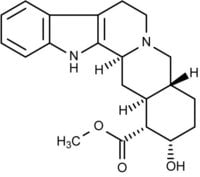Which is more effective?
Alpha-y is touted as having less side effects but my question is, is it more effective?
My understanding is both alpha-y and y antagonize the alpha 2-adrenoceptors but y will also antagonize the alpha 1-adrenoceptors too which can hinder lipoysis and alpha-y will not (or at least not as much as y would.
Full text to the second one - In Vivo
again, my question is on the effectiveness of each. Alpha-y is harder and more expensive to obtain compared to plain yohimbine hcl.
Alpha-y is touted as having less side effects but my question is, is it more effective?
My understanding is both alpha-y and y antagonize the alpha 2-adrenoceptors but y will also antagonize the alpha 1-adrenoceptors too which can hinder lipoysis and alpha-y will not (or at least not as much as y would.
[3H]rauwolscine (alpha-yohimbine): a specific antagonist radioligand for brain alpha 2-adrenergic receptors.
Abstract
[3H]Rauwolscine, a specific and potent alpha 2-antagonist radioligand, was used to characterize alpha 2-receptor binding in bovine cerebral cortex. [3H]Rauwolscine binding was reversible, stereospecific, and saturable. Association, dissociation, and saturation studies revealed one site interactions (k -1/k+1 = 1.2 nM, KD = 2.5 nM, Bmax = 160 fmol/mg protein) and competition studies indicated that [3H]rauwolscine labeled the alpha 2-receptor. Agonists inhibited [3H]rauwolscine binding in a shallow, GTP-sensitive manner. These results suggest that [3H]rauwolscine specifically labels both the high and low affinity states of the alpha 2-receptor in brain membranes.
PMID 6276200
In vivo alpha(1)-adrenergic lipolytic activity in subcutaneous adipose tissue of obese subjects.
The role of alpha(1)-adrenoceptors in lipid mobilization and blood flow was investigated in situ using microdialysis of subcutaneous adipose tissue in severely obese subjects. The lipolysis rate was assessed by determination of interstitial glycerol concentration. The alpha(1)-adrenoceptor agonist norfenefrine caused an increase in glycerol level in adipose tissue that was similar to that observed with the physiologic alpha(1,2)-beta(1)-adrenoceptor agonist norepinephrine, whereas the alpha(1)-adrenoceptor antagonist urapidil showed no effect on basal lipolysis rate. However, the enhanced glycerol concentration due to norfenefrine and norepinephrine was suppressed in the presence of urapidil. The beta-adrenoceptor antagonist propranolol showed no effect on norfenefrine-stimulated glycerol outflow. Blood flow was assessed using the ethanol escape technique. Perfusion with norfenefrine decreased blood flow, whereas urapidil enhanced blood flow significantly. Despite the increase in blood flow, the basal interstitial glycerol concentration remained unchanged. Although norfenefrine at high concentrations could inhibit the urapidil-induced increase in blood flow, the norfenefrine-induced glycerol output was not affected. These results demonstrate that alpha(1)-adrenoceptors are involved in regulation of lipolysis rate and microcirculation of adipose tissue. However, the observed changes in local blood flow were not related to glycerol output.
PMID 11907178
Full text to the second one - In Vivo
again, my question is on the effectiveness of each. Alpha-y is harder and more expensive to obtain compared to plain yohimbine hcl.



